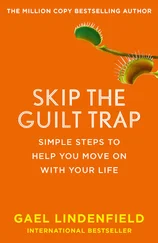Nasturtiums: Sow the seeds in pots in spring and the foliage then large orange and yellow blooms will quickly appear. Great for playing food games with, as the flowers are edible.
 Tomatoes: Every gardening beginner’s favourite. You can grow them from seedlings planted straight into a compost bag or large pot. They need a sunny spot and a fair bit of watering, but there’s nothing like growing your own to encourage young children to try eating tomatoes.
Tomatoes: Every gardening beginner’s favourite. You can grow them from seedlings planted straight into a compost bag or large pot. They need a sunny spot and a fair bit of watering, but there’s nothing like growing your own to encourage young children to try eating tomatoes.
Herbs: These plants are a wonderful source of scent. Lavender and rosemary are pretty tough, and both have purple-ish small flowers that attract bees. Rosemary can be used in cooking, and the petals of lavender can be dried and then used to make sweet-scented pocket-pillows or pot pourri.
 Get your children interested in nature while they are out in the garden with you, and make their job the one of feeding the birds. You can very simply make a birdbath by using a terracotta flowerpot saucer or an old ceramic plate placed on top of an upturned flowerpot. Make sure it is kept clean and is filled with fresh water often – young children love to help with this. Providing birds with food, especially in the winter when the ground is frozen, is very important. Most garden centres sell seasonally-appropriate food to scatter on the ground, or on a bird table. You can also make bird-feeders with your children to hang from trees. Our favourite are apple- and seed-feeders which seem to attract most birds to our garden. (See for how to make this garden bird-feederwith your children.) The Royal Society for the Prevention of Cruelty to Animals has further tips for looking out for garden birds. Visit: www.rspca.org.uk/allaboutanimals/wildlife/inthewild/feedinggardenbirds/birdfeedingguide
Get your children interested in nature while they are out in the garden with you, and make their job the one of feeding the birds. You can very simply make a birdbath by using a terracotta flowerpot saucer or an old ceramic plate placed on top of an upturned flowerpot. Make sure it is kept clean and is filled with fresh water often – young children love to help with this. Providing birds with food, especially in the winter when the ground is frozen, is very important. Most garden centres sell seasonally-appropriate food to scatter on the ground, or on a bird table. You can also make bird-feeders with your children to hang from trees. Our favourite are apple- and seed-feeders which seem to attract most birds to our garden. (See for how to make this garden bird-feederwith your children.) The Royal Society for the Prevention of Cruelty to Animals has further tips for looking out for garden birds. Visit: www.rspca.org.uk/allaboutanimals/wildlife/inthewild/feedinggardenbirds/birdfeedingguide
Brilliant books for budding gardeners 
There are some funny and beautifully illustrated picture books about gardens and gardening to pique interest and entertain you and your little ones. Here are a few of our favourites:
T he Enormous Turnip – a classic folk tale retold by many and available worldwide in various editions
T he Carrot Seed by Ruth Krauss
M onkey and Robot in the Garden by Felix Hayes and Hannah Broadway
B en’s Butterfly Garden by Kate Petty and Axel Scheffler
F lora’s Flowers by Debi Gliori
E ddie’s Garden: and How to Make Things Grow by Sarah Garland
How about singing while you do your garden chores? Here are a few of our favourites:
D’you know the parts of a plant?  (Sing to the tune of Head, Shoulders, Knees and Toes)
(Sing to the tune of Head, Shoulders, Knees and Toes)
D’you know the parts of a plant, of a plant?
D’you know the parts of a plant, of a plant?
Flower and leaf
And stem and root
D’you know the parts of a plant, of a plant?
Lavender’s blue and Roses are red medley
Lavender’s blue, dilly dilly
Lavender’s green
When I am king, dilly dilly
You shall be queen.
Roses are red, dilly dilly
Violets are blue
Sugar is sweet, dilly dilly
And so are you.
For more information and seasonal suggestions for gardening with children, visit the Royal Horticultural Society website at www.rhs.org.uk/Children/For-families
*change the action to sing about different types of laundry jobs like ‘hang out the clothes’, or ‘fold the clothes’.
*Change to other areas or pieces of furniture such as the banister, the bookshelf, the TV, the windowsill or the picture frame
10-Second Set-ups
‘The quickest way for a parent to get a child’s attention is to sit down and look comfortable.’
Lane Olinhouse
As a parent, you know how the concept of time radically changes as soon as there’s a baby around. Minutes can seem like hours when your little one won’t stop crying or refuses to sleep, and hours can pass like minutes when it seems you’ve surely only just finished feeding your baby and yet somehow it’s time to do it all again. Babies just don’t follow the conventions of time as we know it. As Catharine Kedjidjian of the website BabyZone writes, ‘Babies start life with a distorted concept of time: night can be day and everything is now.’
We are at the behest of our babies. We find ourselves asking questions like, ‘Is there time for me to get dressed before the baby needs feeding again?’ or even, ‘Do I have time to go to the toilet before the baby needs me?’ And the truth is, there really is no way of telling if there is actually time or not; when our children are babies there are countless days when we never quite have enough time to get fully dressed, or to brush our hair, or even to drink a cup of tea while it’s still warm. As parenthood begins, time is no longer our own, and either gladly or reluctantly, we hand it over to our babies and join the ranks of selfless providers and carers as per the tacit new-parent contract: any time, any place, anywhere.
‘While I feed my baby I can eat my lunch with one hand or pick things up off the floor with my feet. I have my hair tied back in a pony-tail – well, that stays put for days without any attention. You learn to just get by when you have a baby.’
Mum of two – master of multi-tasking
Carla Poole, Susan A. Miller EdD, and Ellen Booth Church explain on Scholastic.comhow this early parenting is important in forming the beginnings of a baby’s understanding of time:
‘A multitude of nurturing moments helps babies’ natural body rhythms and schedules take shape. Loving relationships are formed and life becomes a more predictable pattern of people, things, and events.’
As our babies move towards toddlerhood, time begins to take on a more recognisable and predictable structure again. But there is no concept of hours or minutes in a toddler’s mind; instead there’s nap time, milk time, nappy-changing time, lunch time, snack time, story time, play time, bath time and bed time. They’re grasping the abstract nature of time through the routines and patterns of their daily activity. They’re certainly not sticking to any clock, and woe betide any parent who tries to keep their toddler ‘on time.’ I’ll never forget my own battles at the sandpit when my son, then two, would clearly demonstrate that his time to play had not finished – despite whatever I might think. He just would not have it that it was time to leave, that the park was closing. He would lie down on his back, stiff as a board, refusing to budge. Ah, happy memories.
As Carla, Ellen and Susan point out, two-year-olds have all the time in the world; it’s us adults who never have enough. When your child is a toddler it’s clear that they are still in charge of time – and they can be incredibly forceful in deciding how it will be spent, and often frustratingly unrealistic.
The good news is that as toddlers move towards preschool age, they begin to understand the concept of ‘before’ and ‘after’. This can be very useful in moving the day along smoothly; we, the grown ups, can then start to be more in charge of time, with simple authoritative statements that include these concepts: we’ll play outside after nap time, or, before we have our snack we must wash our hands.
Preschoolers also start to get the idea of when and then , which is lovely for either reviewing the day, reporting it to granny, say, or using it to talk about the future: when you’ve taken off your shoes and coat, then you can go and play. There are lots of positive and playful methods of establishing rules and routines in the chapter Sanity Savers.
Читать дальше

 Tomatoes: Every gardening beginner’s favourite. You can grow them from seedlings planted straight into a compost bag or large pot. They need a sunny spot and a fair bit of watering, but there’s nothing like growing your own to encourage young children to try eating tomatoes.
Tomatoes: Every gardening beginner’s favourite. You can grow them from seedlings planted straight into a compost bag or large pot. They need a sunny spot and a fair bit of watering, but there’s nothing like growing your own to encourage young children to try eating tomatoes.
 (Sing to the tune of Head, Shoulders, Knees and Toes)
(Sing to the tune of Head, Shoulders, Knees and Toes)










